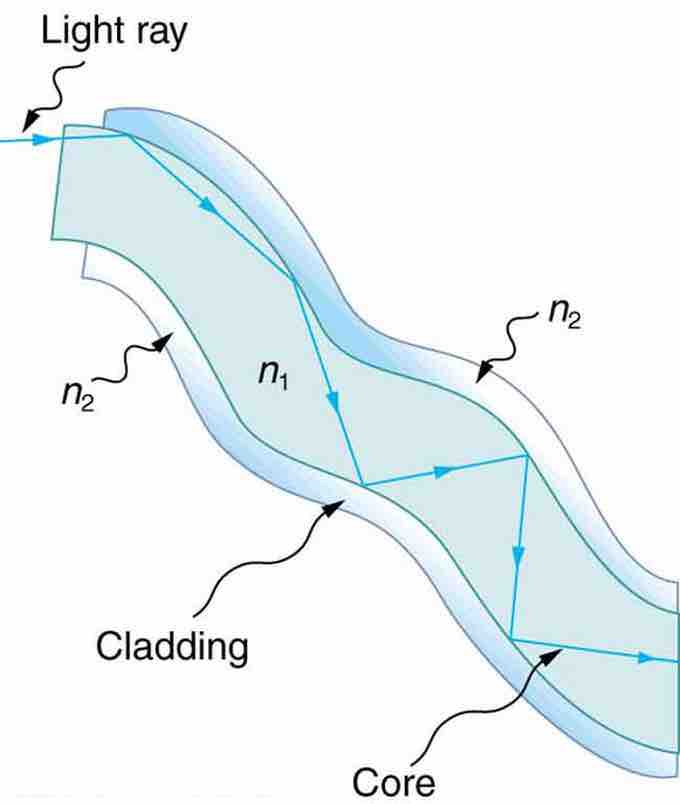Total internal reflection is a phenomenon that happens when a propagating wave strikes a medium boundary at an angle larger than a particular critical angle with respect to the normal to the surface . If the refractive index is lower on the other side of the boundary and the incident angle is greater than the critical angle, the wave cannot pass through and is entirely reflected. The critical angle is the angle of incidence above which the total internal reflectance occurs.
Critical angle
The critical angle is the angle of incidence above which total internal reflection occurs . The angle of incidence is measured with respect to the normal at the refractive boundary (see diagram illustrating Snell's law). Consider a light ray passing from glass into air. The light emanating from the interface is bent towards the glass. When the incident angle is increased sufficiently, the transmitted angle (in air) reaches 90 degrees. It is at this point no light is transmitted into air. The critical angle

Fig 1
Refraction of light at the interface between two media, including total internal reflection.
Optical Fiber
Total internal reflection is a powerful tool since it can be used to confine light. One of the most common applications of total internal reflection is in fibre optics. An optical fibre is a thin, transparent fibre, usually made of glass or plastic, for transmitting light. The construction of a single optical fibre is shown in .

Fig 2
Fibers in bundles are clad by a material that has a lower index of refraction than the core to ensure total internal reflection, even when fibers are in contact with one another. This shows a single fiber with its cladding.
The basic functional structure of an optical fiber consists of an outer protective cladding and an inner core through which light pulses travel. The overall diameter of the fiber is about 125 μm and that of the core is just about 50 μm. The difference in refractive index of the cladding and the core allows total internal reflection in the same way as happens at an air-water surface show in . If light is incident on a cable end with an angle of incidence greater than the critical angle then the light will remain trapped inside the glass strand. In this way, light travels very quickly down the length of the cable over a very long distance (tens of kilometers). Optical fibers are commonly used in telecommunications, because information can be transported over long distances, with minimal loss of data. Another common use can be found in medicine in endoscopes. The field of applied science and engineering concerned with the design and application of optical fibers are called fiber optics.